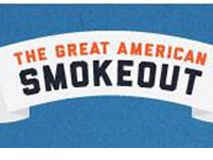What you need to know about the 2013 Great American Smokeout

November 21 is the Great American Smokeout. On this day, smokers have two choices: decide to quit, just for one day, or quit smoking completely. As we know, smoking kills both teeth and bodies. It affects the oral condition in so many ways: discolored teeth and stained teeth are just the tip of the iceberg. Oral changes due to the negative effect of smoking and tobacco use causing nicotinic stomatitis are evident. Prolonged smoking will affect the salivary flow rate, causing concomitant issues. The effect on dry mouth, dental caries and periodontal disease has been well documented. Smoking is a risk factor in wound healing and delayed implant integration. Leukoplakia, oral, larynx, pharynx, esophagus, and lung cancer have smoking as potential etiologies. Smoking kills everything. In a smoker, proper cellular function is affected throughout the body, not only the mouth or the lungs. Other cancers, such as pancreas cervix, ovary, colon, kidney, rectum, stomach have had links to smoking.
One in five Americans still smoke, even after all the graphic words on the sides of cigarette packages and Surgeon General Warnings. Tobacco use is one of the most preventable causes of death. Dependence on tobacco and nicotine is a known addiction. According to the CDC, smoking costs $96 billion in medical costs along with $97 billion in lost productivity due to illness. In addition, over 88 million people breathe second hand smoke, which is also a cause of disease and death.
As dental practitioners, we have the unique ability to speak about prevention with every patient at every visit. Brushing, flossing, dietary control of sugary substances, are part of our normal conversations. Smoking cessation should be discussed with every patient who has indicated they are a smoker. The danger of starting smoking and potential lifelong nicotine addiction is another topic of discussion for our younger patients. Not only are we able to discuss the oral implications, but add in the medical ones. We know there is a link between oral and systemic health. Having the discussion about quitting earlier will elongate lives.
We also have the ability to discuss interventions. We are able to create smoking cessation programs, along with physicians, for our patients. Several FDA approved medications are available, along with patches or gums, to help the patient reach their smoke free goal. Hypnosis, acupuncture or other alternate methods of therapy are also options. We are also able to discuss potential quitting plans: set up quit dates, educating on withdrawal symptoms and requesting support groups through friends and families. Through our visits, dental practitioners are definitely able to encourage quitting and congratulate successes at subsequent visits.
These are not single conversations. Smoking cessation counseling and support does take time and commitment, but it is easily incorporated in our preventive paradigm of treatment. There will be many difficulties. Nicotine withdrawal is a real issue. This is where continued support is key. As part of a team of health care practitioners encouraging our patients to quit, they will hear the same message repeated.
We also have to model good health. For those practitioners who are still smoking, now should be the time to quit. Many years ago, I had worked as a temporary hygienist (in my days during dental school). I was asked to work for a dentist who had two operatories with a lab between the rooms. Between patient checks, he always had a lit cigarette in the lab. He took a few puffs of the cigarette, went to check the patient, and then took another few puffs to go back to his operative room. Not only was it offensive to me, but it had to be offensive to the patient. Think of the smoke that “adheres” to the lab jacket. Yes, fingers are now in gloves and masks cover the face, but the scent does permeate. It was gag-worthy. I never understood why patients put up with this behavior. I only remained in that office one day and it was one day too long. I see other dental professionals outside their practices smoking between patients, as well. Patients do have a choice of where to spend their dental dollars. Unless they think you are the best ever, you may be driving off patients. Not to mention, this is definitely poor role modeling. We are health care practitioners.
So, when your patient is asking about the lines around their mouth, that they feel make them look older, have a discussion about stopping smoking. Or, when they don’t understand why their gums look pale or are receding, talk about that cigarette. Tying it into the long range financial success of their dental investment is also a great idea. We always sell the idea of prevention. Adding smoking cessation to the conversation should be easy. Thursday November 21, 2013 is a great time to start!
Please check out information about the Great American Smokeout on their website (http://www.cancer.org/healthy/stayawayfromtobacco/greatamericansmokeout/index). Accessed November 17, 2013
CDC Data: http://www.cdc.gov/tobacco/campaign/tips/resources/data/cigarette-smoking-in-united-states.html Accessed November 17, 2013
ADA support:
Mouthhealthy.org
http://www.mouthhealthy.org/en/az-topics/s/smoking-and-tobacco
Accessed November 17, 2013
American Cancer Society:
Workplace solutions: FreshStart® Group based tobacco cessation program http://www.acsworkplacesolutions.com/freshstart.asp
Accessed November 17, 2013
Guide to Quitting Smoking:
http://www.cancer.org/healthy/stayawayfromtobacco/guidetoquittingsmoking/
Accessed November 17, 2013
ACTIVA BioACTIVE Bulk Flow Marks Pulpdent’s First Major Product Release in 4 Years
December 12th 2024Next-generation bulk-fill dental restorative raises the standard of care for bulk-fill procedures by providing natural remineralization support, while also overcoming current bulk-fill limitations.
















